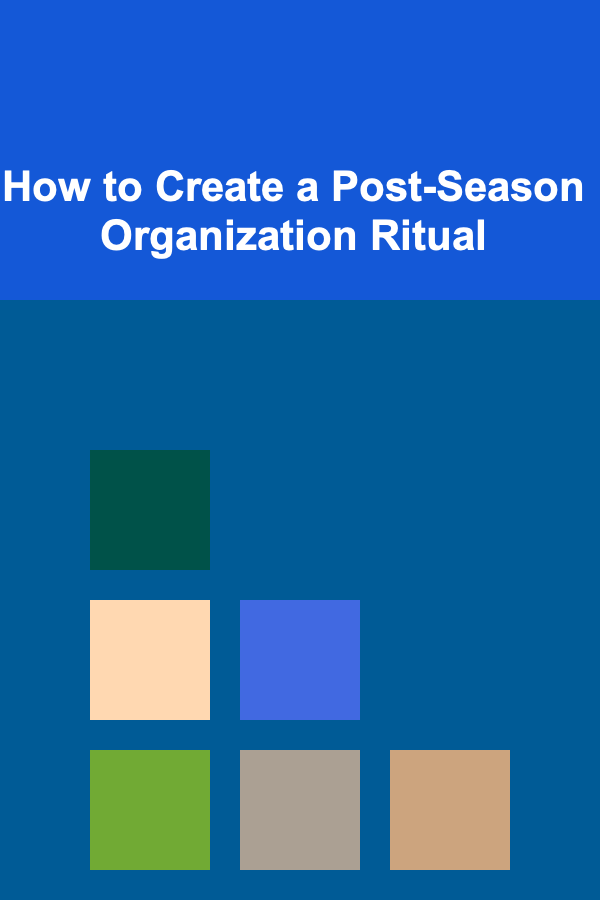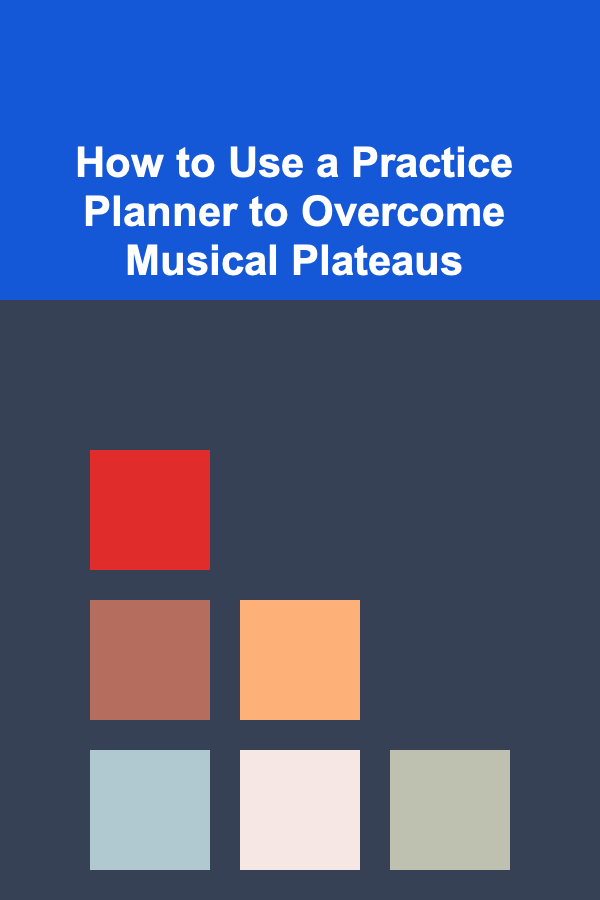10 Tips for Tracking Reading Progress with a Planner
ebook include PDF & Audio bundle (Micro Guide)
$12.99$5.99
Limited Time Offer! Order within the next:
Tracking your reading progress is one of the best ways to stay motivated, increase your reading comprehension, and establish a consistent reading habit. While there are many tools and apps available for this purpose, a planner can be an incredibly effective and personal way to keep track of what you read, when you read, and how much you've accomplished. Using a physical planner to track your reading allows you to reflect on your progress and make intentional plans for your reading journey.
In this article, we'll explore 10 valuable tips for tracking reading progress with a planner. Whether you're an avid reader, a casual bookworm, or just someone looking to incorporate more reading into your life, these tips will help you organize your reading goals, track your progress, and celebrate your achievements.
Set Clear Reading Goals
Before diving into tracking your reading progress, it's essential to set clear and achievable goals. A planner is an excellent tool for breaking down these goals into manageable chunks. Start by determining what you want to accomplish in your reading journey, whether it's the number of books, genres, or topics you want to explore.
Example Goals:
- Read X number of books in a year (e.g., 24 books in 12 months).
- Read X pages per day or X minutes per day.
- Explore a variety of genres (fiction, non-fiction, biography, etc.).
- Focus on one book per month and finish it before moving on to the next.
By setting these goals in your planner, you'll be able to visualize your overall reading target and use it as a benchmark to track progress. Be sure to set goals that are realistic but also challenge you to push yourself as a reader.
Use a Reading Log or Calendar
One of the simplest ways to track your reading progress is by using a reading log or calendar in your planner. Each day, week, or month, record the book you're reading, the pages you've completed, and the date. This allows you to see your progress in a very structured way, which can boost motivation.
How to Structure Your Reading Log:
- Book Title: Write the name of the book you're currently reading.
- Pages Read: Record the page numbers you read or the chapters you completed.
- Reading Time: Optionally, note how much time you spent reading.
- Date: Always include the date to keep track of when you read.
This simple log will help you visualize your reading habits and give you a clear picture of how often you're reading, allowing you to identify patterns and adjust your habits if necessary.
Track Books Completed
In addition to logging your daily reading activity, it's important to track the books you've completed. This is an incredibly rewarding practice, as it helps you see how much you've accomplished over time. For each book you finish, write the title, author, and date of completion in your planner.
You can create a section in your planner dedicated to Books Completed, where you list each finished book along with its publication date, a brief review, or a rating. This will allow you to reflect on your journey as a reader and track how diverse your reading choices are.
Example Tracker:
- Book Title: "The Catcher in the Rye"
- Author: J.D. Salinger
- Date Completed: March 5, 2025
- Rating: ★★★★☆
- Notes: A fascinating exploration of adolescence and identity.
This record can provide a sense of accomplishment and can also be a helpful reference in the future when you want to revisit past reads.
Break Books into Manageable Sections
If you find large books daunting, one way to maintain momentum is by breaking them down into smaller, more manageable sections. In your planner, divide the book into chapters or specific page ranges, then create mini-goals for each reading session.
For instance, if a book has 300 pages, you could plan to read 20 pages a day or break the book into 15-page sections. As you complete each section, mark it off in your planner. This technique allows you to track progress incrementally, which can help reduce feelings of being overwhelmed and make it easier to stay on course.
Record Your Thoughts and Reflections
Reading is not just about finishing books---it's about engaging with the material and reflecting on what you've learned. A great way to track your progress is by recording your thoughts and reflections in your planner after each reading session.
Take a few moments to jot down:
- Your impressions of the book or chapter.
- Key takeaways that resonated with you.
- Quotes that you found inspiring or thought-provoking.
- Questions that came up during your reading.
Writing these notes in your planner helps you process what you've read, making it more likely that you'll remember and apply the ideas from your books in the future. Additionally, it can be a helpful way to track the depth of your reading.
Use Reading Challenges and Prompts
If you're looking to add some fun and variety to your reading goals, try incorporating reading challenges or prompts into your planner. Many readers love to take on yearly reading challenges, where they aim to read a specific number of books or books from different genres or countries.
You can find reading challenge prompts online, such as:
- Read a book by a female author.
- Read a book with a blue cover.
- Read a book set in a different country.
Track your progress toward these challenges in your planner by creating a challenge checklist. As you finish books that fit the prompts, check them off in your planner. This can make the reading process more engaging and help you expand your reading horizons.
Create a Reward System
One of the best ways to stay motivated is by rewarding yourself for achieving milestones. In your planner, create a reward system based on your reading goals. For instance, you could set a reward for finishing a certain number of pages or completing a book.
Example Rewards:
- After 100 pages: Treat yourself to a favorite snack.
- After completing a book: Take a relaxing day to watch a movie adaptation of the book.
- After reading 5 books: Buy a new book or visit a bookstore.
These rewards will encourage you to keep up with your reading habit and celebrate the effort you've put in.
Track Reading Time
If you're someone who focuses on the amount of time you spend reading rather than the number of pages, you can track your reading time in your planner. This is especially useful if you prefer to set specific time goals, such as reading for 30 minutes a day.
In your planner, note the start and end times of each reading session. You can also keep a running tally of the total hours you've read over the course of a week or month. Tracking reading time can help you develop consistency and build a solid reading routine.
Monitor Your Reading Trends
As you continue to track your reading progress, use your planner to monitor your reading trends over time. Do you tend to read more in the mornings or evenings? Are there certain types of books that you gravitate toward? How many books do you typically finish in a month?
By tracking these trends, you can adjust your reading habits to make your routine more efficient or enjoyable. For example, if you find that you're reading more during the weekends than weekdays, you might want to adjust your schedule to incorporate more reading into your weekday routine.
Reflect on Your Reading Journey
At the end of each month or year, take some time to reflect on your reading progress in your planner. Look back at the books you've completed, the pages you've read, and the lessons you've learned along the way. Reflect on your growth as a reader, and identify any areas where you'd like to improve or challenge yourself.
Ask yourself questions like:
- How many books did I read this month/year?
- What were my favorite books and why?
- Did I achieve my reading goals?
- What genres or themes do I want to explore next?
This reflection process will not only help you celebrate your achievements but also help you set more intentional and meaningful reading goals for the future.
Conclusion
Tracking your reading progress with a planner is an effective and enjoyable way to stay organized, motivated, and intentional about your reading habits. By setting clear goals, using a reading log, and incorporating other tracking techniques, you can make reading a more engaging and rewarding part of your daily routine. Whether you're a seasoned reader or someone just starting to build a reading habit, these 10 tips will help you track your progress and get the most out of your reading experience. Happy reading!
Reading More From Our Other Websites
- [Organization Tip 101] Best Organization Tools for Organizing Your Closet
- [Personal Investment 101] Earning Passive Income by Selling Deep Learning Models
- [Digital Decluttering Tip 101] Sync or Sink: Choosing the Right Cloud‑Sync Strategy for Teams and Solo Workers
- [Home Renovating 101] How to Create a Mood Board for Renovation That Perfectly Captures Your Style
- [Reading Habit Tip 101] Reading Rituals of the World's Most Influential Leaders -- What You Can Copy Today
- [Home Party Planning 101] How to Decorate for a Party Using Items You Already Own: Creative and Budget-Friendly Ideas
- [Organization Tip 101] How to Document Your Event Planning Process for Future Reference
- [Home Maintenance 101] How to Maintain Your Roof for Longevity
- [Home Maintenance 101] How to Winterize Your Home: Preparing for Cold Weather and Saving Energy
- [Home Party Planning 101] How to Handle Party Clean-Up Like a Pro After Your Home Party

How to Choose the Right Contractor for Your Project
Read More
How to Create a Post-Season Organization Ritual
Read More
The Joyful Home: Cultivating Happiness in Family Life
Read More
How To Use Adobe InDesign for Print Layouts
Read More
Exploring the Bustling Markets of Delhi: A Comprehensive Guide
Read More
How to Use a Practice Planner to Overcome Musical Plateaus
Read MoreOther Products

How to Choose the Right Contractor for Your Project
Read More
How to Create a Post-Season Organization Ritual
Read More
The Joyful Home: Cultivating Happiness in Family Life
Read More
How To Use Adobe InDesign for Print Layouts
Read More
Exploring the Bustling Markets of Delhi: A Comprehensive Guide
Read More